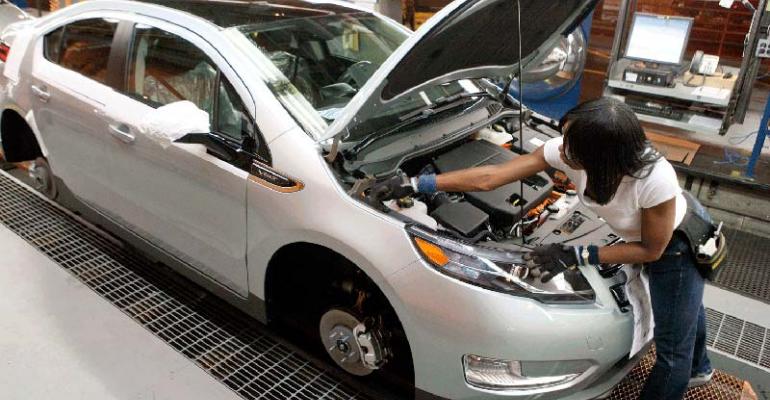An Indiana researcher invents a new class of power inverters he claims could lead to significantly lower costs for makers of electric vehicles, but the technology is proving to be a tough sell.
The inverter developed by Afshin Izadian, of Indiana University-Purdue University at Indianapolis, uses just one switching transistor and generates infinite voltages.
EVs use inverters to generate AC power more efficiently. But conventional inverters use multiple switching transistors and generate limited voltage levels. The devices also are heavy and generate unwanted voltage frequencies, requiring filters to reduce potential harm to the electric grid.
Izadian reconfigured the electrical circuitry in an inverter in his laboratory at the Richard C. Lugar Center for Renewable Energy at IUPUI. The reconfiguration results in a less-expensive, lighter and more efficient inverter, he claims.
By eliminating unwanted voltage frequencies, Izadian says his inverter would make it possible for auto makers to reduce the size and insulation of traction motors, allowing for less-expensive EVs. Also, the size and weight of power electronics could be trimmed. The result is better fuel economy in hybrid cars and other vehicles.
Izadian claims some aerospace and electric-power companies have expressed interest in his new inverter. He says in an email to WardsAuto, “unfortunately, automotive and related industries have shown interest in market-available products (rather) than developing specific ones for EVs and hybrids.”
Izadian estimates his inverter could be developed for use in vehicles and other products within three years.
“I have a working prototype in my energy-systems and power-electronics laboratory,” he says. “It is best for solar power, wind power, automotive and motor drives.”
Auto-industry analyst Joseph Philippi estimates the price of an inverter used by OEMs might range between $300 and $600 and weigh 15-20 lbs. (6.8-9.1 kg). He is unable to determine by how much smaller the new developmental inverter would reduce electric-engine size.
Izadian's work thus far has been funded by IUPUI for the proof of concept. No auto makers have contributed funds to his research; emails sent to automotive and related companies in Indiana have gone unanswered.
“I guess that is more due to financial problems than lack of interest,” he says.


